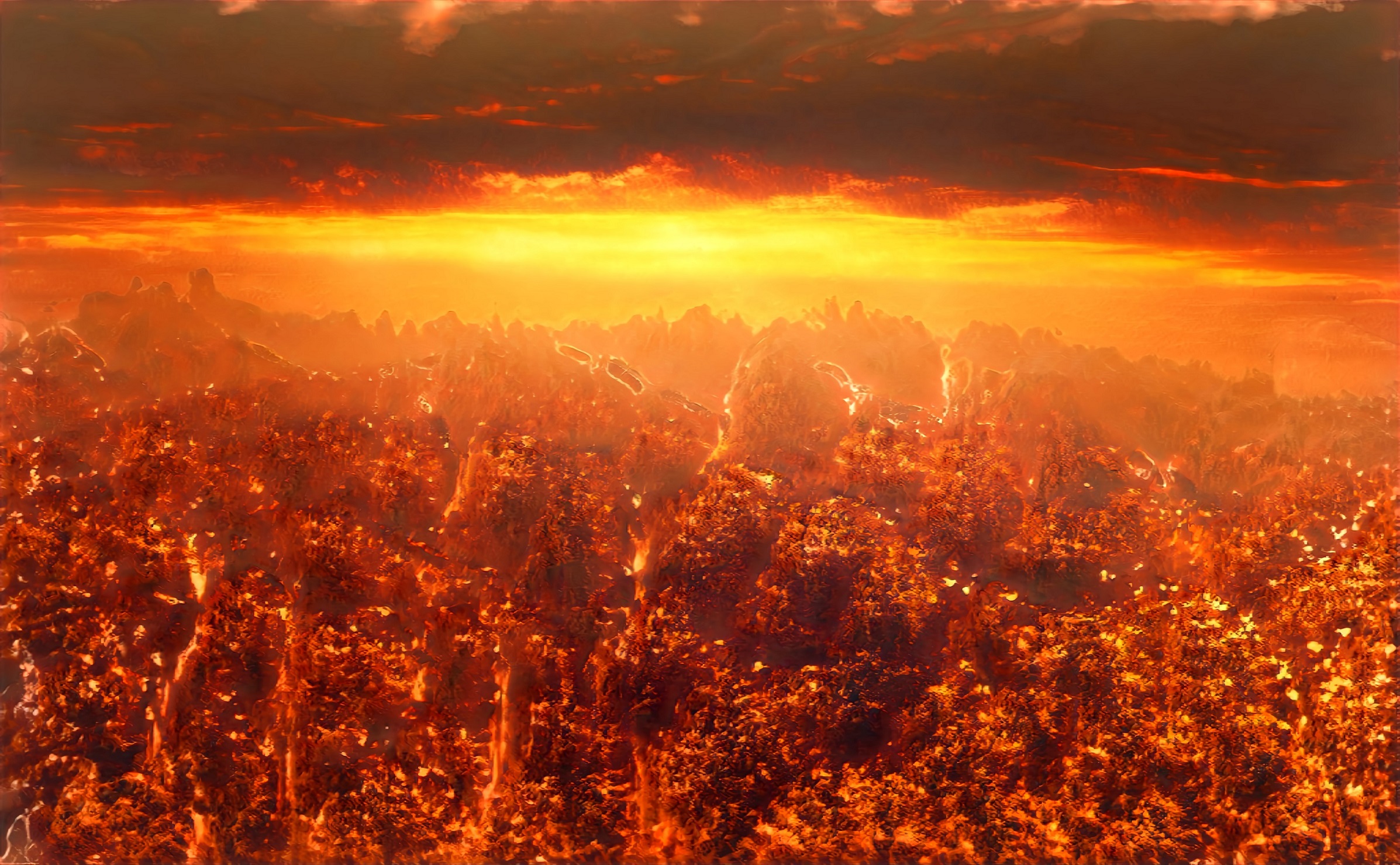Embergrass
The number of mortals who have seen the elemental plane of fire in recorded history likely numbers less than a dozen. Although scholars are peripherally aware of the existence of the elemental planes, their theories on the environments of these places are based largely on the existing accounts of the few planeswalkers who bothered to write down what they had experienced. These accounts are both extremely rare, and astonishingly difficult to translate, owing to the ambiguous nature of Arcane Script. The result of these losses of information is that most individuals who become aware of the fiery plane assume that it is comprised entirely of brimstone and lava, and not much else. After all, what else could there be to an elemental plane of fire?
Embergrass is a hardy wheat-like plant which grows in the fields of ash which rain down in the plane of fire. The plant has developed a natural ability to break down and flourish in the ashen fields, and to grow deep roots into the hard stone ground of the plane of fire. The plant's existence is crucial to the plane of fire's perpetuation, as it can serve as a slow burning fuel for the elemental beings which make their home in the plane. Thus, a cycle is formed around Embergrass, which grows from ash, and is then transformed into ash once more as it is consumed. How the plant continues to reform from the spent ashes is a great magical mystery, and it has given it the nickname "Phoenix Grass" due to the parallel with the mythical elemental beast.
Basic Information
Anatomy
Embergrass consists of an iridescent, orange and yellow stalk. The body of the plant, in groups of thousands and blowing in the wind, can appear at a distance like a blaze in its own right. The grass stalks are topped with a single reproductive leaf, much like wheat on the prime material plane. This leaf grows dozens of seeds called spikelets atop it, which are caught on the wind and embed themselves into the ash when they fall. Unlike plants on the prime material plane, Embergrass harvests energy (in the form of ambient heat, more so than light) throughout its entire body, rather than primarily through its stalk.
Growth Rate & Stages
Embergrass begins from small seeds which grow atop the tall stalks and are then blown away by the powerful scorching breezes that blow between the great conflagrations and the erupting mountains. When the seeds fall into a field of ash, they begin to grow into roots. The plant is often able to harvest ash and ambient warmth without peeking through the ash, and so one can often dig up wide and deep root networks before any stalks of Embergrass are even visible. As the plant matures, it will grow a long grassy stalk, continuing to absorb heat through the stalk and ash through its root network. When reaching full maturity, it will grow a reproductive leaf covered in seeds, ready to be blown away once more by the winds.
Ecology and Habitats
This plant flourishes throughout the plane of fire. In the ever-burning plane, there are often large mounds of infinite fire which seem to be fueled by an unlimited source of heat. These conflagrations, as well as the volcanic mountains of the plane, perpetually spit ash into the air, which falls and pools in wide and deep valleys. Embergrass has an almost monopolistic command of the ash fields, with very few other non-elemental forms of life being able to survive in the same conditions. In the ash fields, the layers of ash can sometimes be miles deep, and the deep roots of Embergrass will form into massive networks, stabilizing the loose ash into a sort of stockpile for thousands of generations of Embergrass in turn. Slowly, the hardy plant endeavors to unbury the plane's valleys.
Dietary Needs and Habits
Embergrass functions by harvesting heat and ash from the plane, and forms these reagents into a grainy plant matter. Whether this plant can truly be called a plant, or instead be classified as an elemental is a common debate had by those who come across it, few as they may be in number.
Scientific Name
Spodium aestivum
Conservation Status
Least Concern



Comments